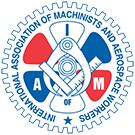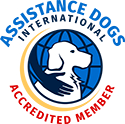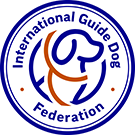Best Practices When Around a Service Dog
I don’t know about you, but I absolutely love dogs. I can’t pass a dog on the street without giving a generous amount of head scratches and asking, “Who’s a good boy?”
However, when it comes to service dogs, I keep my doggy love in check. And for good reason. Service dogs are doing a job. Because of this, you cannot treat a service dog like any other puppy you pass on the street.
Today, I’m going to tell you how to properly behave around service dogs.
What is a service dog?
Service dogs are remarkable canines that have been specially trained to aid people with disabilities.
To put it simply, a service dog is a dog with a job. The exact job the dog performs depends entirely on the disability they have been trained to assist with.
- For the visually impaired: A service dog can guide them through crowds, around obstacles and stop at stairs and crossings.
- For those in a wheelchair: A service dog can help pull the wheelchair up a ramp, press a button on automatic doors, pick up dropped items and even bring objects such as a ringing phone to the owner.
- For people with epilepsy: A service dog can alert the owner before a seizure occurs and remain close during a seizure to prevent injury.
- For veterans with PTSD: A service dog can interrupt its owner when suffering from an episode by nudging, bringing medication or even circling the owner in a crowded area to create personal space.
A service dog is more than a pet. It becomes an extension of the person who has the disability. The two become a team, and they rely on both verbal and non-verbal communication to live a full life.
As you see, a service dog plays a vital role in its owner’s well-being. For this reason, you cannot treat a service dog like any other dog. Instead, treat service dogs as medical equipment.
With thousands of Americans owning service dogs, there is a good chance you have come across one in your daily travels. So, it is important to know how to behave when around them.
How should you act around a service dog?
Depending on the disability, a service dog can perform life-saving tasks. While they may look cute, service dogs are often the only thing that is standing between their handler and life or death.
So please, consider the following advice when you are near a service dog.
Don’t judge
Look, I understand that not everyone has a pleasant experience around dogs. A dog attack can be traumatic, or you may have allergies. But it doesn’t mean you need to judge service dogs based on your experience.
Service dogs undergo up to two years of training, and only the most obedient and mild-mannered dogs pass. You are safe around a service dog. As for allergies, simply be polite and quietly move away.
Approach the handler, not the dog
As discussed earlier, the service dog and handler are an equal team. Even so, if you want to speak or communicate with them, approach the owner first. Give the dog space. Depending on the disability, the handler’s life could depend on the dog staying focused on her job. And, it’s hard to concentrate on keeping your handler safe when a person is making weird sounds, waving or standing in the way.
Try not to be nosey. While service dogs are fascinating, the owner doesn’t want to talk to everyone about her dog or condition. Imagine every time you want to run a quick errand and ten people stop you on the way to ask you questions. That would get old fast.
Since the American with Disabilities Act (ADA) does not mandate that service dogs need to wear special harnesses or even carry identification, it’s best to assume that every dog you meet is a service dog unless the owner states otherwise.
Never touch a service dog without asking permission first
Like all dogs, service dogs love pats and scratches. Who wouldn’t? However, this distraction might prevent him from caring for his handler. While it might not look like it to you, the dog may actually be in the middle of assisting their owner – and you just interrupted it!
If you have small children who don’t know better, then you also need to ensure that they don’t get too close either.
Keep your dog away from service dogs
We all love goofing around with our friends, right? However, I bet that you wouldn’t want them distracting you while you are at work. The same goes for service dogs. They are on the job and don’t need to be distracted by your dog’s sniffing and excited barking. If you want your pet to approach them, check with the owner first.
If you can identify that a service dog is walking toward you, either scoop your pup up in your arms, cross the road or keep your dog on a short leash so that you do not provide a distraction.
Never, ever offer food to a service dog
Okay, this one should be obvious, but if you are like my grandmother, who walks around with dog biscuits in her pockets to give to dogs she passes on the street (seriously!), then I need to make it abundantly clear:
Don’t give food to a service dog.
Not only is it distracting (even service dogs love food), but many service dogs are on a strict diet and feeding schedule. Even worse, some dogs have allergies. If a service dog becomes sick, then they cannot perform their job properly.
A sleeping dog is still on the job
All dogs nap, even working dogs. However, just because a working dog is taking a snooze doesn’t mean that it’s off the job. If the handler is sitting for an extended period, it’s perfectly normal for a working dog to have a quick sleep. She’s still on the job, so all the previous advice remains true.
Let the owner know if a service dog approaches you
Service dogs are trained to perform their respective tasks without distractions. If a service dog approaches you with its owner and sniffs or paws at you, then let the owner know. This may be unwanted behavior that needs correcting. Even though the dog is demanding your attention, ignore it and talk directly to the owner instead.
An unattended service dog is a sign its owner needs help
Of course, there is an exception to every rule. If a service dog approaches you without its handler, don’t just shoo it away. You might just save someone’s life.
You see, a dog in a harness without its owner nearby is unusual. If a service dog nudges you with its nose or barks at you with no owner in sight, it’s a clue that the dog is seeking help.
In this instance, follow the dog. It will lead you to its owner. Identify the situation, and if necessary, call 911 immediately.
Conclusion
As you see, service dogs play a vital role in the health and well-being of a person with a disability. When they are on the job, it’s essential that you don’t interrupt or distract them – the handler’s life depends on it!
Chelsie is a journalist at DogLab. When she is not researching and reviewing dog products, she is pampering her pup, Harper, a German Shepherd x Border Collie mix.







